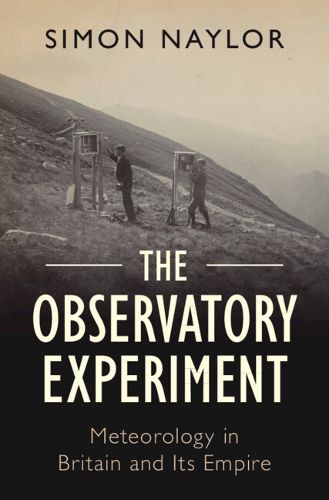Readings Newsletter
Become a Readings Member to make your shopping experience even easier.
Sign in or sign up for free!
You’re not far away from qualifying for FREE standard shipping within Australia
You’ve qualified for FREE standard shipping within Australia
The cart is loading…






In this innovative history of the science of meteorology, Simon Naylor focuses our attention on the spaces in which it was pursued: meteorological observatories. During the nineteenth century, meteorologists established or converted sites where observers and their instruments could be housed, where they collected and analysed data and developed meteorological theories. He examines a number of these sites around the British Empire, along with the governmental, military and commercial networks connecting them. Taking many shapes to capture the weather in different environments, these observatories brought various social groups into contact with the practice of science, including sailors on naval surveying vessels, climbers ascending Scottish peaks, and families checking their rain gauges at home. Through a study of these spaces, Naylor argues for the treatment of meteorology as an experimental observatory science, on which the development of knowledge about local, regional, national and global weather and climate relied.
$9.00 standard shipping within Australia
FREE standard shipping within Australia for orders over $100.00
Express & International shipping calculated at checkout
In this innovative history of the science of meteorology, Simon Naylor focuses our attention on the spaces in which it was pursued: meteorological observatories. During the nineteenth century, meteorologists established or converted sites where observers and their instruments could be housed, where they collected and analysed data and developed meteorological theories. He examines a number of these sites around the British Empire, along with the governmental, military and commercial networks connecting them. Taking many shapes to capture the weather in different environments, these observatories brought various social groups into contact with the practice of science, including sailors on naval surveying vessels, climbers ascending Scottish peaks, and families checking their rain gauges at home. Through a study of these spaces, Naylor argues for the treatment of meteorology as an experimental observatory science, on which the development of knowledge about local, regional, national and global weather and climate relied.